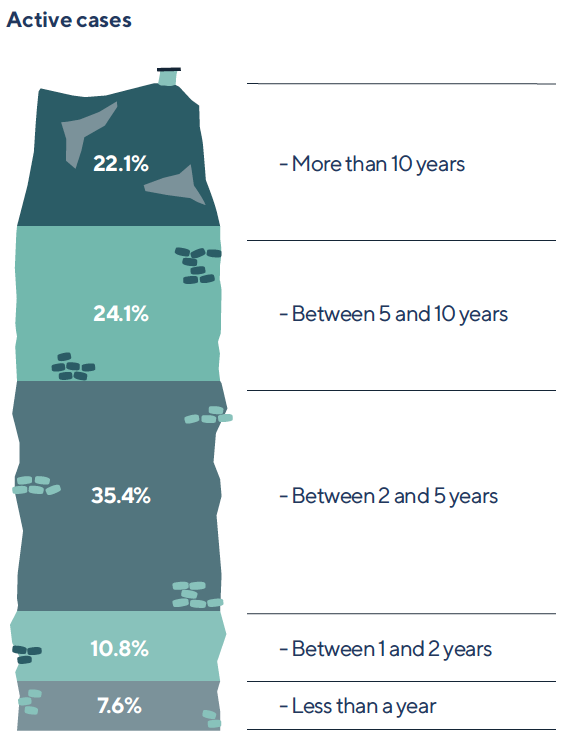Bringing homes back into use
This year EHOs recorded 1152 properties brought back into use. Information on how long the home was empty for was available for 69% of these properties. Almost 50% had been empty for between 2 and 5 years and a further 19% had been empty for more than 5 years (including 43 properties that had been empty for more than 10 years).
This reflects a continued shift in the age profile of empty homes brought back to use that we first noticed in our 2020 annual report. In the year prior to that, 24% of homes brought back into use had been empty for less than a year and 30% had been empty for 1 to 2 years. This year those figures have fallen to 7% and 24% respectively.
Evidence gathered from our annual survey, case studies and best practice meetings have all shown that the longer homes remain empty the harder it becomes to bring them back into use. 2 and 5 years are particular milestones after which work to bring a home back to use becomes both more complex and costly. The role EHOs must play in unlocking stuck properties and returning them to active use is clearly demonstrated by these figures. Each of the 394 homes in the 2 to 5-year category will now not reach the next milestone.

At the same time, the figures showing EHO’s active caseload highlights just how many properties do reach this milestone and can also remain empty after 10 years.
Of the 2,157 active cases EHOs have at present, information was provided on length of time empty for 85% of properties.
Properties empty for 5 to 10 years and 10 years or longer combined make up just over 46% of current active caseload.
There are many obstacles to bringing these properties back to use. Amongst the most common cited are difficulties locating and engaging with owners. Linked to this, there are several cases that are stalled either because no grant of confirmation has been issued following the death of a previous owner, or notification of a grant has not been given to a local authority.
Two local authorities have provided us with data on this, which showed that both have more than 50 homes that have been empty for three years or more where no grant of confirmation has been issued following the death of the owner. Of these, 20 became empty prior to 2010 in one local authority, and 14 became empty prior to 2010 in the other. Both authorities also reported that some of these had been empty throughout this century.
While some of these can eventually be brought back to use through EHO intervention, in other cases legal obstacles may prevent the property ever being returned to use even where there appears to be no direct descendent of the deceased or anyone else with an interest in taking the property on.

